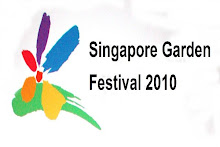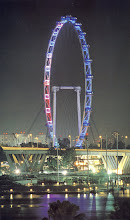.JPG)
Wan Qing Yuan(晚晴园)- Sun Yat Sen Nanyang Memorial Hall
History
The villa was built in late 19th Century and is believed to have been built by businessman Boey Chuan Poh in 1880 to house his mistress, Bin Chan, from whom came the building's original name, Bin Chan House.
In 1905, the villa was bought by rubber magnate Teo Eng Hock from a timber merchant for his aged mother, Mdm Tan Poh Neo. A fervent supporter of the Chinese revolution movement to overthrow the Qing dynasty in China, Teo Eng Hock later offered the place as the Singapore branch of the Tong Meng Hui, or the Chinese Revolutionary Alliance, to Dr Sun Yat Sen for his revolutionary activities in February 1906 until the successful Xinhai Revolution in 1911. Tong Meng Hui was formed to help drum up support and raise money for the revolution. The villa later became the alliance's Southeast Asia headquarters.
After the revolution in 1911, Mr Teo's business declined and he sold the 2,760 m² property. In March 1937, it was bought by a group of six leading Chinese businessmen in Singapore, including philanthropist Lee Kong Chian, to be preserved as a historical site.
During the Japanese Occupation of Singapore in World War II, the villa was used as a communications hub by the Japanese.
In the early 1950s, the villa was handed over to the Singapore Chinese Chamber of Commerce and Industry. The chamber turned it into a place of historical interest in 1965 after a major renovation and was known as Sun Yat Sen Villa.
Gazetted a national monument on 28 October 1994, it symbolises the contributions of the overseas Chinese to the revolutionary movement in China, as well as the inspiration of Dr. Sun's nationalist ideals on the people of Singapore, which was formerly a British Colony.
The villa was closed in November 1997 for restoration at a cost of S$7.5 million, and reopened in November 2001 as the Sun Yat Sen Nanyang Memorial Hall.
Admission Fee:
Adult $4.00
Senior Citizens $3.00
Child $3.00
School organised group $2.00
.JPG)
What to see inside?
Today, the villa is home to a collection of at least 50 paintings, calligraphy works and sculptures.
One highlight is a 2-metre tall bronze wall mural which spans 60 m to the back of the building and depicts Singapore's history from the 1840s to the 1940s. Sculpted by artists from China, it is probably Singapore's longest bronze mural. Work started as early as 1999 and was completed in early 2005. Costing nearly S$1 million, the museum's most expensive artwork depicts scenes like Singapore as a fishing village in the 1840s and Japanese troops' purge of anti-Japanese elements during their occupation here in the 1940s.
Scattered around the garden grounds are several bronze statues, including those of martyrs who helped Dr Sun, and a metre-tall sculpture of Dr Sun, seated on a chair, which was presented by the Kuomintang in China back in 1937. More bronze sculptures of Dr Sun line the hallway leading to the museum's entrance.
The second level of the museum displays oil and watercolour paintings and calligraphy works by top Singaporean and Chinese artists, such as the late Singapore pioneer painter Liu Kang, well-known Buddhist monk and artist Reverend Song Nian, and Cultural Medallion-winning artists Ong Kim Seng and Tan Swie Hian.
Besides paintings in oil and water colour, and a bronze relief showing rubber tappers at work in Malaya, some 400 other photographs, artefacts and audio-visual equipment are also exhibited to tell the story of Dr Sun's success in Southeast Asia, where he drummed up support for his revolution. These include more than 10 major oil paintings, including a showpiece 6 m-by-3 m in oil, showing Dr Sun speaking in 1907 to tin miners and rubber plantation workers at Kampar in Perak in then Malaya.
Most of the paintings, the bronze wall mural and the bronze statues and busts, worth over S$1.5 million, which were commissioned by the museum, were paid for by the Lee Foundation.
The museum receives about 2,000 visitors a month, mainly students and tourists.
Please click onto the photos itself to view more photos.
































.jpg)

.jpg)

.jpg)











No comments:
Post a Comment